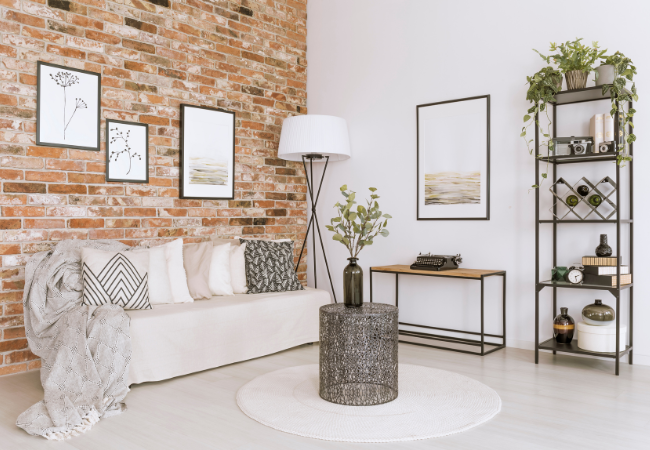Drywall is a commonly used material for interior walls and ceilings in residential and commercial buildings. It provides a smooth, durable surface that can be easily painted or textured. However, like any building material, drywall is susceptible to damage. Today, we at L.W. Winslow Painting, Inc. would like to share some of the common types of drywall damage and how they can occur.
Drywall Cracks
Cracks are one of the most common types of drywall damage. They can be caused by various factors, such as settling of the building, temperature fluctuations, or even improper installation. Small cracks are usually cosmetic in nature and can be easily repaired with spackling or joint compound. However, larger cracks may indicate underlying structural issues and may require professional assessment and repair.
Nail Pops in Drywall
Nail pops occur when the drywall nails or screws become loose and push through the surface, creating a visible bump or hole. This can happen due to the natural expansion and contraction of the building materials or improper installation. Nail pops are relatively easy to fix by removing the loose fastener, applying joint compound, and sanding the area before repainting.
Drywall Water Damage
Water damage is a common problem that can severely affect drywall. It can be caused by leaking pipes, roof leaks, plumbing issues, or floods. When drywall gets wet, it becomes weak, discolored, and may even crumble. Mold growth is also a concern in water-damaged drywall. Repairing water damage involves removing the affected portion of the drywall, drying the area thoroughly, and replacing it with new drywall. Additionally, addressing the source of water intrusion is crucial to prevent further damage.
Impact Holes in Drywall
Accidental impacts, such as furniture collisions or doorknob strikes, can cause holes in drywall. Small holes can be repaired with spackling or joint compound, while larger holes require patching with a drywall patch or a piece of new drywall. The patched area is then sanded, primed, and painted to match the surrounding wall.
Drywall Settling & Shifting
Over time, buildings may settle or experience shifting due to various factors like soil movement or foundation issues. This can lead to visible cracks, uneven surfaces, and gaps between drywall sheets. Repairing these types of damage often involves reinforcing the underlying structure, filling gaps with joint compound, and applying multiple layers of joint compound to achieve a smooth finish.
Peeling or Bubbling Paint in Drywall
Sometimes, the paint on drywall may start to peel or bubble. This can be caused by moisture behind the drywall, poor surface preparation before painting, or the use of low-quality paint. To fix this issue, the peeling or bubbled paint needs to be scraped off, the surface needs to be smoothed with sandpaper, and a new coat of primer and paint should be applied.
Interior & Exterior Painting & More in Amagansett, Bridgehampton, East Hampton, Hampton Bays, Montauk, North Haven, North Sea, Noyack, Shelter Island, Sag Harbor, Shinnecock Hills, Southampton, Springs, Water Mill, Westhampton & Westhampton Beach, New York
Drywall damage is a common occurrence in buildings. Cracks, nail pops, water damage, impact holes, settling and shifting, and peeling paint are some of the common issues that can affect drywall. It is important to address these problems promptly to prevent further damage and maintain the integrity and aesthetics of the walls or ceilings. Depending on the severity of the damage, it may be necessary to seek professional assistance to ensure proper repair and restoration. Call L.W. Winslow Painting, Inc. if your drywall needs repair and our experts will take care of the rest.


